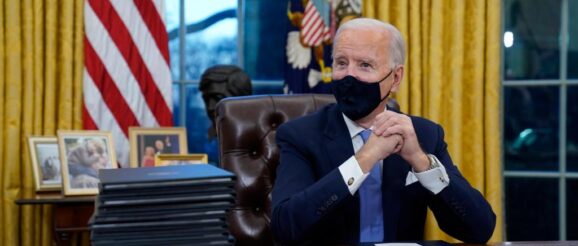Biden’s COVID recovery plan has upsides but lacks innovation – Orange County Register

The long and contentious transition is over. Joe Biden is America’s 46th president. And one thing is already clear: his post-COVID recovery plan is likely to be key to his time in office.
Although we haven’t yet seen actual legislation, he has released the broad outline of what he intends, and it demonstrates two things. First, Biden understands that millions of Americans are suffering from the pandemic and its economic fallout, and unlike his predecessor, he empathizes with their struggles. But Biden’s $1.9 trillion plan also demonstrates that he has no new ideas about how to deal with those issues. In every case, his response is little more than to throw money at the wall and see what sticks. It’s as if Biden hears the music but only knows one tune.
Of course, some of Biden’s proposed spending makes sense. He would, for example, allocate more money for COVID testing and to speed up vaccine production. Even the most ardent fiscal hawk would agree fighting a nationwide pandemic that is killing 4,000 Americans a day is a legitimate government interest. Yet, even here, Biden can’t seem to bring himself to endorse actions that wouldn’t necessarily involve more money, like speeding up access to the AstraZeneca (already approved in Britain) and Johnson & Johnson vaccines.
Elsewhere, Biden has simply embraced the traditional Democratic wish list: more money to subsidize states and localities, education funding, and an additional $1,400 per-person stimulus check. Those efforts are poorly targeted and unlikely to do much to reinvigorate the American economy.
But it is when Biden’s plan transitions to larger efforts to reduce poverty that he really shows a lack of new thinking.
Biden is right to focus on efforts to help the poor and disadvantaged communities that have been hit hardest by the pandemic. With little savings, tenuous attachment to the job market, and limited options for working at home, the poor have been the virus’s biggest victims. And, even before the pandemic, far too many Americans struggled to get by. It makes sense to target efforts to fight poverty in both the short and long terms.
But Biden’s plans still amount to little more than subsidizing the high cost of items like childcare and housing rather than tackling the unnecessary regulations that keep those prices out of reach for average Americans. In the short term, Biden’s plans to spend more money on anti-poverty programs will undoubtedly lower poverty rates. Giving people more money, after all, means that they will have more money.
Yet Biden’s proposals would do little to fix the problems that trap far too many American families in poverty and dependence. He would, at least in the short run, make poverty slightly less miserable, but he would not usher in the type of reforms that would enable poor Americans to become full participants in the American economy.
Related Articles
Indeed, other Biden proposals are likely to be counterproductive. A federal $15 per hour minimum wage, for example, would be debatable during a normal economy. And at a time when many small businesses are struggling to stay afloat, it makes little sense. Plus, adding an additional $400 on top of unemployment benefits through September can easily leave some unemployed workers worse off if they return to their jobs and are making less money.
Ultimately, Biden clearly wants to help. But COVID presents a new challenge to the American economy. Falling back on the same old playbook is not going to be the answer.
Michael Tanner is a senior fellow at the Cato Institute and directs the Institute’s Project on Poverty and Inequality in California.
